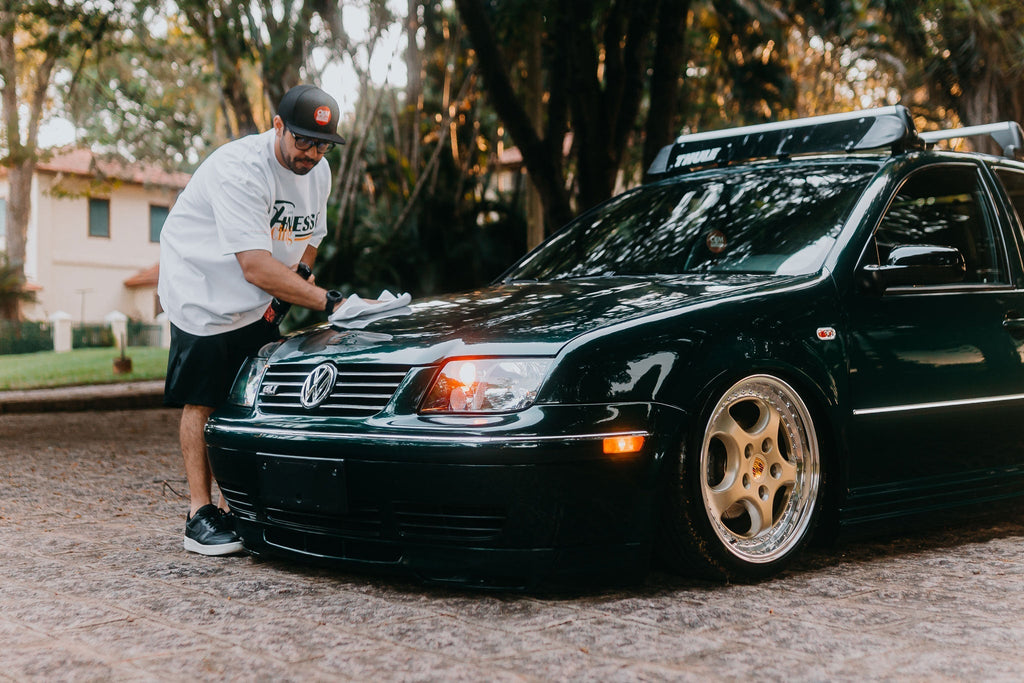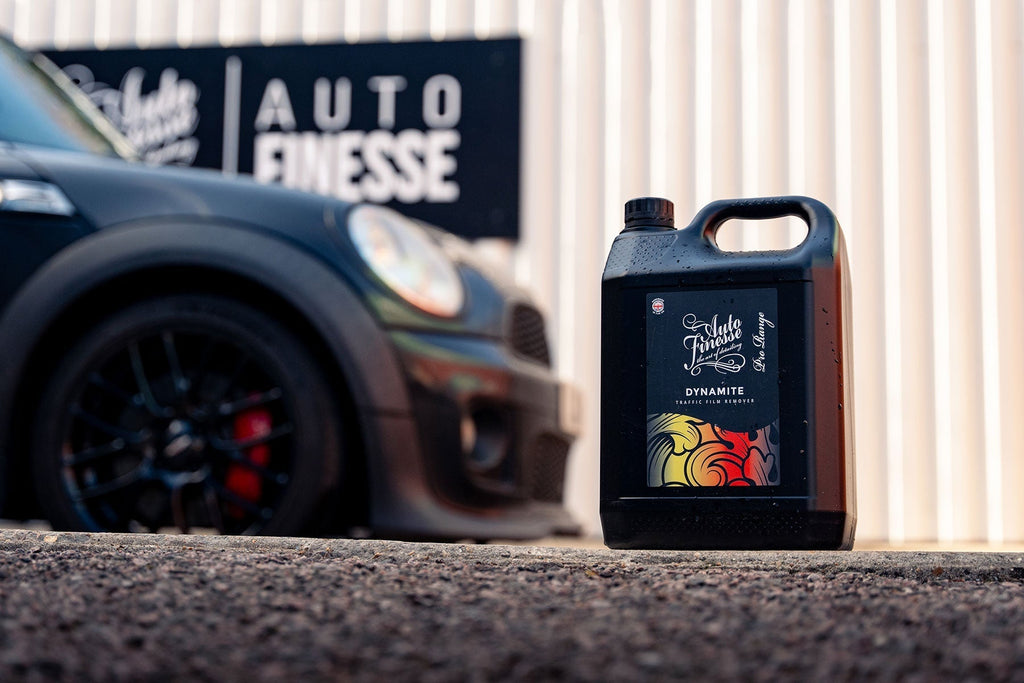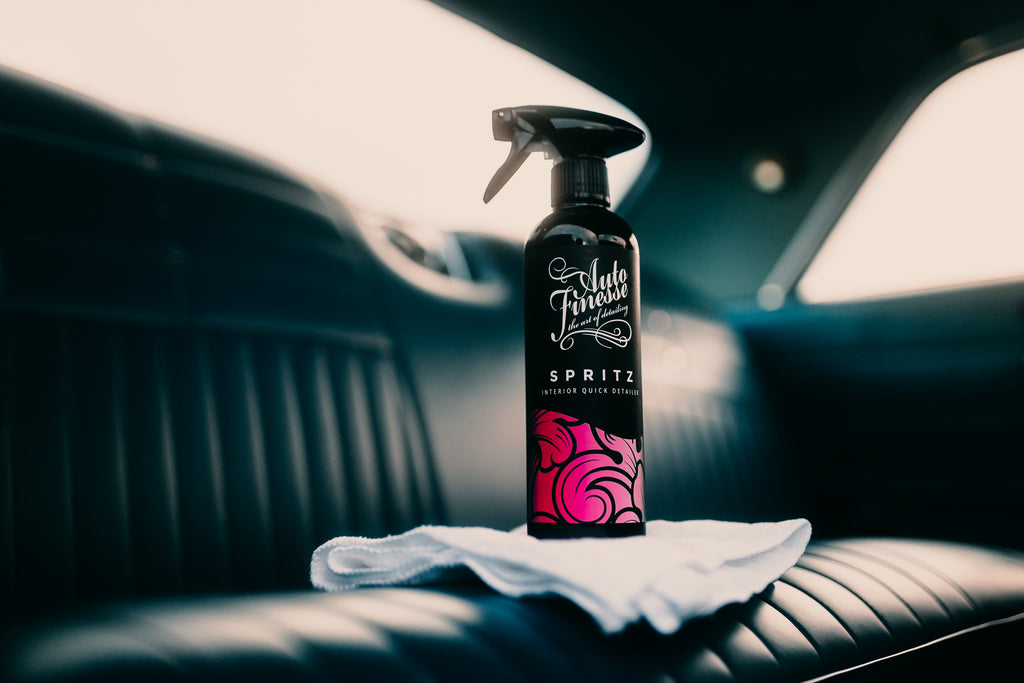Exterior Plastic Trims

In This Free Guide:
- Discover the best products to clean and protect any plastic surface.
- Perfect your techniques for achieving a flawless finish.
- Understand the key differences between silicone-based and water-based dressings.

Why Should You Pay Attention To Your Plastics?
- Plastic surfaces are often overlooked, which can detract from the overall detail and lead to permanent damage.
- Plastic trim is highly vulnerable to dirt buildup and fading caused by UV exposure.
- Cleaning and protecting plastic trim is simpler and faster than most people realise.
Keep Your Plastic Parts Looking Their Best!
Exterior plastic trim plays a key role in a car’s overall appearance, and neglecting it can diminish the entire look. Whether your car features prominent bumpers (like a classic Mk2 Golf) or bold arches reminiscent of the Audi Allroad or MINI, these areas require proper cleaning and protection as part of your detailing process.
These trims face constant exposure to harsh elements like rain, road debris, bird droppings, salt, and tree sap. Over time, this exposure leads to fading, drying, and cracking, allowing dirt and grime to penetrate. Prevention is far easier than dealing with costly replacements—after all, replacing a neglected bumper isn’t something anyone wants to deal with.
That’s where we step in—or more specifically, where standout products like Revive Trim Dressing and Dressle All-Purpose Dressing make all the difference.


Always Start By Cleaning Your Plastics
It’s essential to remember that much of protecting your plastic trim starts with proper cleaning.
After washing your vehicle, thoroughly clean all plastic trims using an all-purpose cleaner, such as a 1:5 dilution of Verso All-Purpose Cleaner. This step removes any old dressings and tackles grime or oils left behind during the wash.
By eliminating these residues, the dressing you apply next will adhere better and last longer. Once the trims are clean, dry them thoroughly with a microfiber drying towel or air blower, paying special attention to removing moisture from panel gaps.

Revive: Trim Dressing
The next step is applying your trim dressing, and here we’re using Revive. This silicone-based product is specially formulated to rejuvenate exterior plastics while providing excellent water resistance.
Start by shaking the bottle to activate the ingredients. Apply a small, coin-sized amount of Revive to a foam or microfiber applicator, then work it into the plastic trim using moderate pressure. Ensure the product is spread evenly across the surface, and let it cure for 5-10 minutes before buffing it off with a clean microfiber towel.
We recommend giving the trim a final buff to even out the finish and remove any excess product that hasn’t fully bonded. This helps prevent streaking or runoff when it rains.
Revive is safe for use on rubber as well and offers advanced protection against future fading. Its durability surpasses that of standard water-based dressings.
As a precaution, avoid scrubbing plastic surfaces or using abrasive tools, as these can stain or accelerate fading. Additionally, steer clear of products containing acid-based solutions, which can cause significant damage to plastics.



Dressle: All-Purpose Dressing
Another trim dressing in our range, Dressle, is a versatile product that can be used on engine bays, inner arches, and a variety of exterior and interior plastic surfaces. It leaves a natural, understated sheen while its UV inhibitors protect against fading. This advanced water-based formula is free from waxes, oils, and petroleum distillates.
When applying Dressle to engine bays or inner wheel arches, ensure the area is thoroughly clean beforehand. Spray the product liberally over all plastic and rubber components. Then, let it dry naturally for 4-6 hours. After this curing period, simply wipe away any excess—yes, it’s that easy!



When applying Dressle All Purpose Trim Dressing to your vehicle's exterior trim, you can either spray it directly onto the surface or, for more precise application, spray 2-3 spritzes onto a microfibre cloth (or microfibre applicator) and work it into the trim. Allow it to cure before proceeding.
If any patchy areas appear, simply apply an additional coat for an even finish.


While we're mainly focusing on exterior trim, it’s important to mention that Dressle is also an excellent, non-sticky product for your interior. When using it inside your car, simply spritz Dressle directly onto plastic surfaces, then spread and wipe it away with a microfibre cloth for a clean, natural finish.
For more precise application and to avoid overspray, spray a couple of spritzes onto a microfibre cloth or microfibre applicator and gently wipe over the surface. Finish by buffing off with a fresh cloth.








